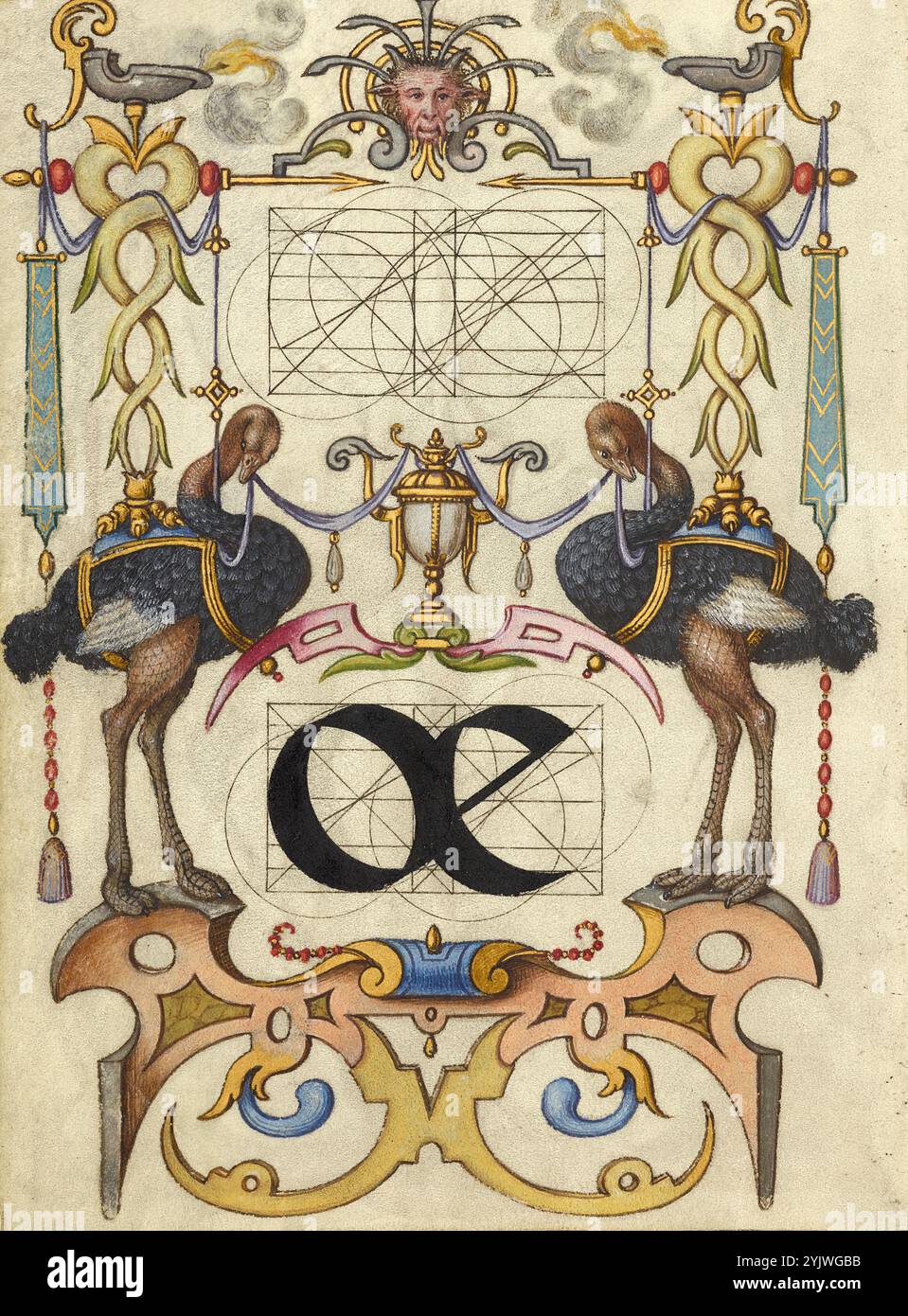Guide for Constructing the Ligature oe; Mira calligraphiae monumenta, about 1591-1596. In writing and typography, a ligature occurs where two or more graphemes or letters are joined to form a single glyph. Additional info: In the 1500s, as printing became the most common method of producing books, intellectuals increasingly valued the inventiveness of scribes and the aesthetic qualities of writing. From 1561 to 1562, Georg Bocskay, the court secretary to the Holy Roman Emperor Ferdinand I, created this Model Book of Calligraphy in Vienna to demonstrate his technical mastery of the immense ran

Image details
Contributor:
Heritage Image Partnership Ltd / Alamy Stock PhotoImage ID:
2YJWGBBFile size:
140.3 MB (11.8 MB Compressed download)Releases:
Model - no | Property - noDo I need a release?Dimensions:
6016 x 8152 px | 50.9 x 69 cm | 20.1 x 27.2 inches | 300dpiPhotographer:
Heritage ImagesMore information:
This image could have imperfections as it’s either historical or reportage.
Guide for Constructing the Ligature oe; Mira calligraphiae monumenta, about 1591-1596. In writing and typography, a ligature occurs where two or more graphemes or letters are joined to form a single glyph. Additional info: In the 1500s, as printing became the most common method of producing books, intellectuals increasingly valued the inventiveness of scribes and the aesthetic qualities of writing. From 1561 to 1562, Georg Bocskay, the court secretary to the Holy Roman Emperor Ferdinand I, created this Model Book of Calligraphy in Vienna to demonstrate his technical mastery of the immense range of writing styles known to him. About thirty years later, Emperor Rudolph II, Ferdinand's grandson, commissioned Joris Hoefnagel to illuminate Bocskay's model book. Because of Hoefnagel's interest in painting objects of nature, his detailed images complement Rudolph II's celebrated Kunstkammer, a cabinet of curiosities that contained bones, shells, fossils, and other natural specimens. In addition to his fruit and flower illuminations, Hoefnagel added to the Model Book a section on constructing the letters of the alphabet in upper- and lowercase.